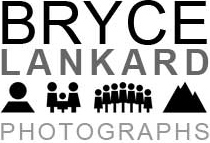
Irish Channel, NOLA
LAND OF DREAMS:
A PHOTOGRAPHY EXHIBITION OF NEW ORLEANS CULTURE
I consider New Orleans to be the richest poor city in America.
So much of the culture that informs America was spawned there, and often comes from the depths of poverty and desperation. The Crescent City's strengths come from its pride, creativity, openness and its often gumbo-like sense of its own identity. While the city maintains many distinct and seperate cultures, the population, like many of the neighborhoods throughout the city, mix rich and poor, black and white and all the shades in between. Everyone regularly rubs elbows, both in life and in the myriad of cultural displays. The city and its surrounding parishes are rife with mystery, pageantry, squalor, decay, elegance and decadence. There is harmony and there is strife, there are celebrations of hope and a resignation of despair. It is a city that knows equally well how to fully live a life as well as how easy it is to take one. Despite, or perhaps because of, these factors I most agree with Jerry Lee Lewis' sentiment, "New Orleans, the land of dreams, The best place I have ever seen."
The photographs in this exhibition are a result of twenty years (so far) of wide-eyed wonder and fascination and love of this most amazing of American cities. For a city that is so hard to define, I have attempted to capture the cultural collage and the social symphony of the area in the tone and mood they inspire in me. I hope these images paint as broad a portrait of New Orleans as possible, in all it's permutations.
Bryce Lankard
New York City, 11/28/2005
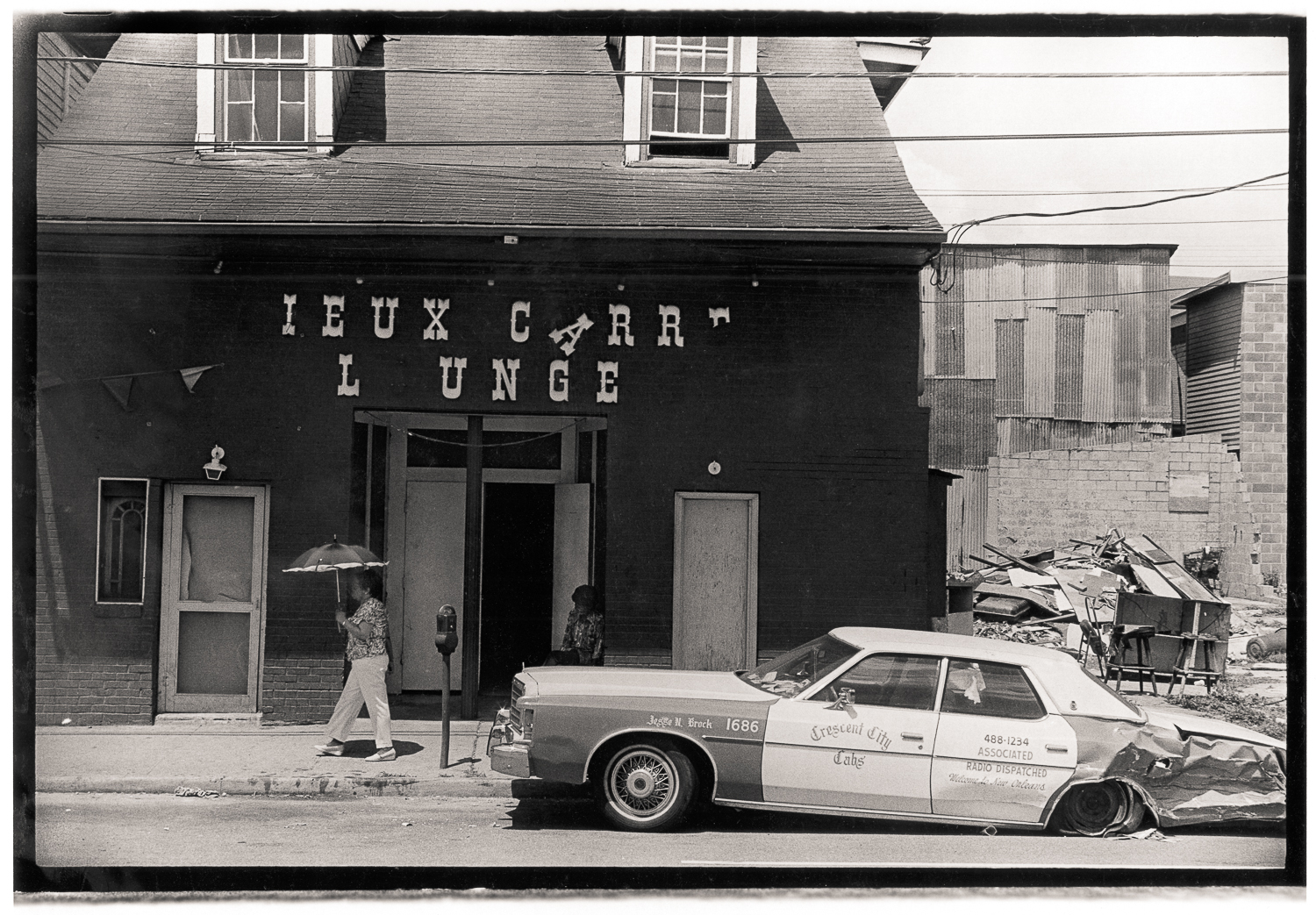
Basin Street, New Orleans, LA 1987
'Land of Dreams'
The Herald-Sun, Blue Greenberg
Bryce Lankard's photographs are about a place that was. For 20 years, Lankard has looked at his beloved pre-Katrina New Orleans and celebrates it, warts and all.
In these days of camera phones where the unthinkable is shot and transmitted by amateurs, Lankard's photographs are not of the moment; they are, however, documents that situate a place in its time. Carefully organized, crafted and true to detail, in this exhibit Lankard has chosen moments in the lives of people who made up the warp and woof of New Orleans. Unasked, is the question, "Do we really want to resurrect the New Orleans of the past with its poverty, its squalor and its slums hidden behind the fantasies of the tourists?" Can we have New Orleans back as the dream world of fun and make-believe, or has the dream disappeared forever when the truth about the Ninth Ward made the headlines?
Lankard's photographs are in stark black and white; they invite long looks, nostalgic memories, anger, shock and a longing for the fairy tale of Mardi Gras. There is the beautiful young boy dressed in his finery before the parade of the Money Wasters Social Aid and Pleasure Club; the musicians and strutters marching with the Golden Trumpets Social Aid and Pleasure Club and Native Americans on Super Sunday. And there are the masked Flambeaux and a Zulu member getting his make-up applied. In another part of town are young white girls dressed for the Mystic Krewe of St. Anne and the pre-teen princesses sitting in a circle waiting for the Krewe of Caesar to begin while the older male leaders of Caesar pose for pictures backstage before the ball.
There are also other photographs: the naked female entertainers and the women who bare their breasts, the street entertainers, a kid playing a trombone as big as he is, a saxophone player in front of the Cabildo. And there is a homeless sleeper on Bourbon Street, two kids playing with a make-believe pistol and a toddler on a tricycle that has no front wheel.
Lankard has it all, the funeral parades, the above-ground cemetery and the church with its wall of offerings of limbs and crutches to a blessed saint. In his introduction to his catalogue, the artist describes New Orleans as "Graciousness and dissolution. Squalor and elegance. It is a city that knows how to live a life fully -- how easy it is to take one." That city is gone; that land of dreams is history.

Sho-bar, Bourbon Street, New Orleans, LA 1987

Beauty Contest, Golden Meadow, LA

Backstage at the Krewe of Caesar Ball
Backstage at the Krewe of Caesar Ball, New Orleans, La 1989

Carnival Princesses, Krewe of Caeser Ball
Carnival Princesses, Krewe of Caesar Ball, New Orleans, La 1989

Krewe members getting dressed, Caesar’s Ball New Orleans, LA 1989

Mystic Krewe of St. Ann on Fat Tuesday, NOLA

Cueing for Flambeaux, NOLA 1995

Masked Flambeaux carriers, New Orleans, LA 1995
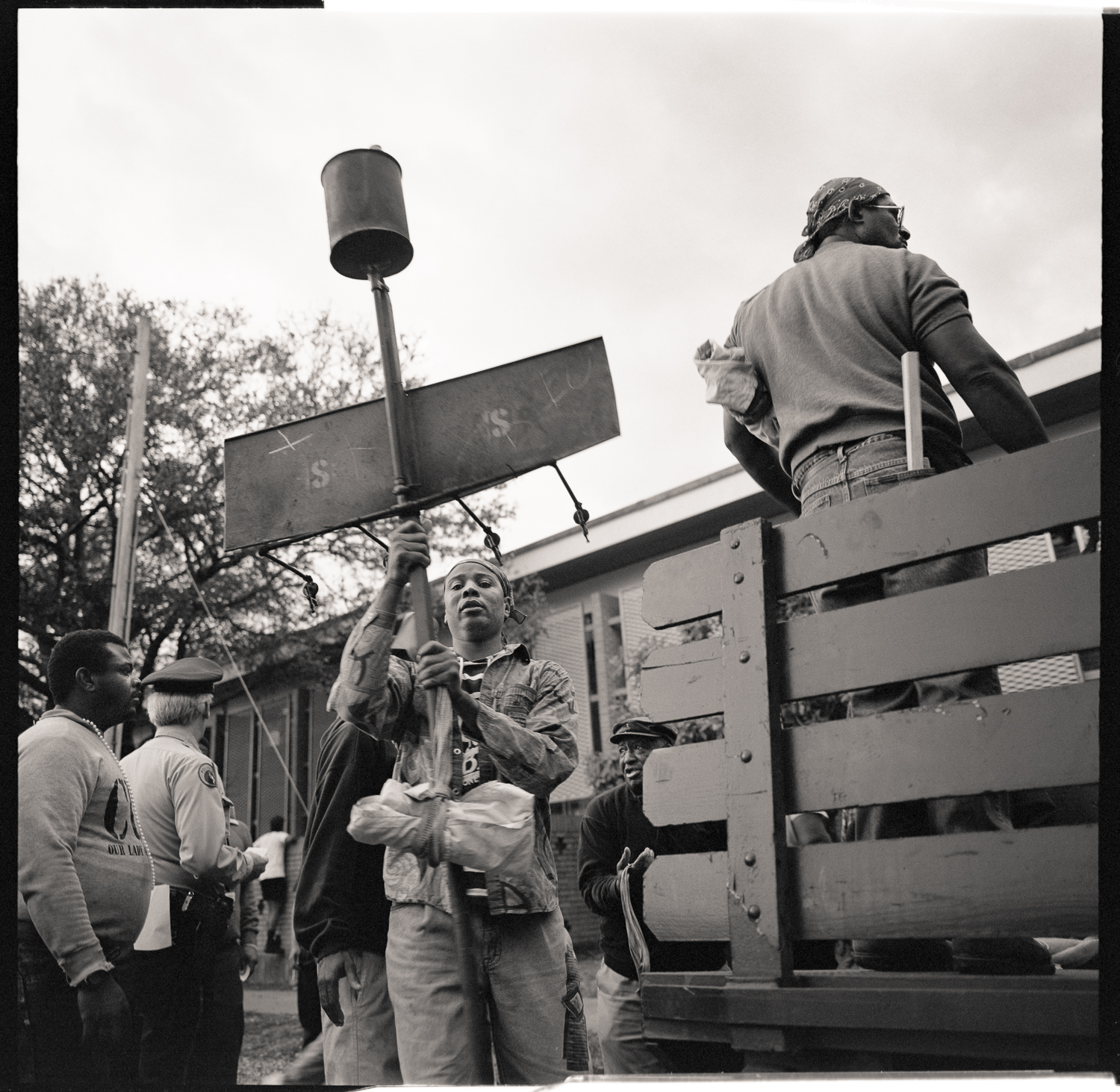
Passing out Flambeaux, NOLA 1995

Three flambeaux, New Orleans, La 1995
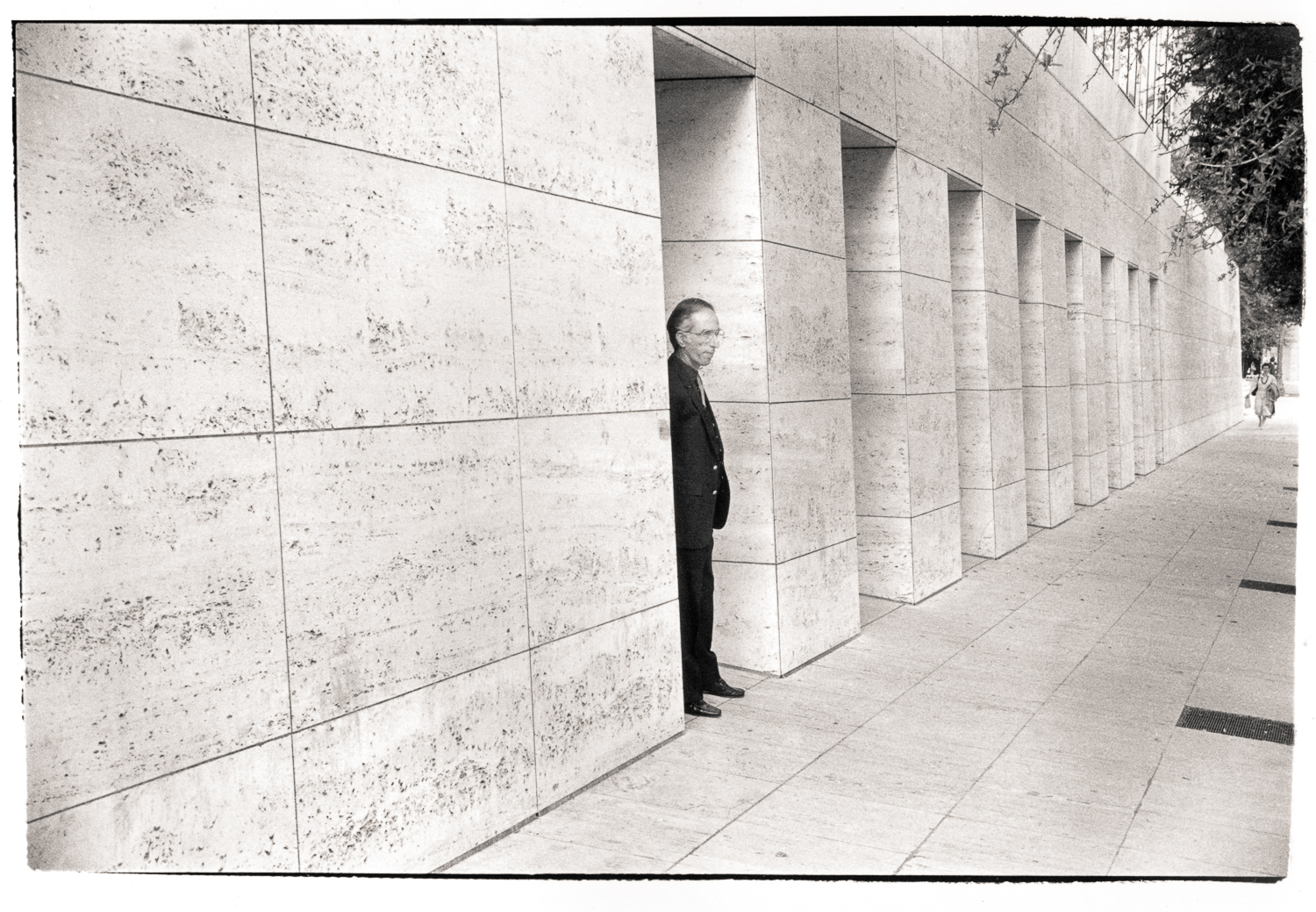
Poydras St. NOLA

Cabildo Museum fire. NOLA
Cabildo fire New Orleans, LA 1988

The Economy New Orleans, LA 1988

Camp and St. Mary Streets, NOLA

Two kids on car in Central City New Orleans, LA 1987

Double dutch in the Irish Channel New Orleans, LA 1991

Mardi Gras revelers, NOLA 1988

Creole Wild West, indian practice at the Glass House, NOLA 1991

Mardi Gras Indian Wild Man on Super Sunday New Orleans, LA 1989

Mardi Gras Indians and Second Line New Orleans, LA 1989

Grits Pool Hall, Nola, 1993

Lady Linda and Tuba Fats in Jackson Square

Three French Quarter tappers New Orleans, LA 1991
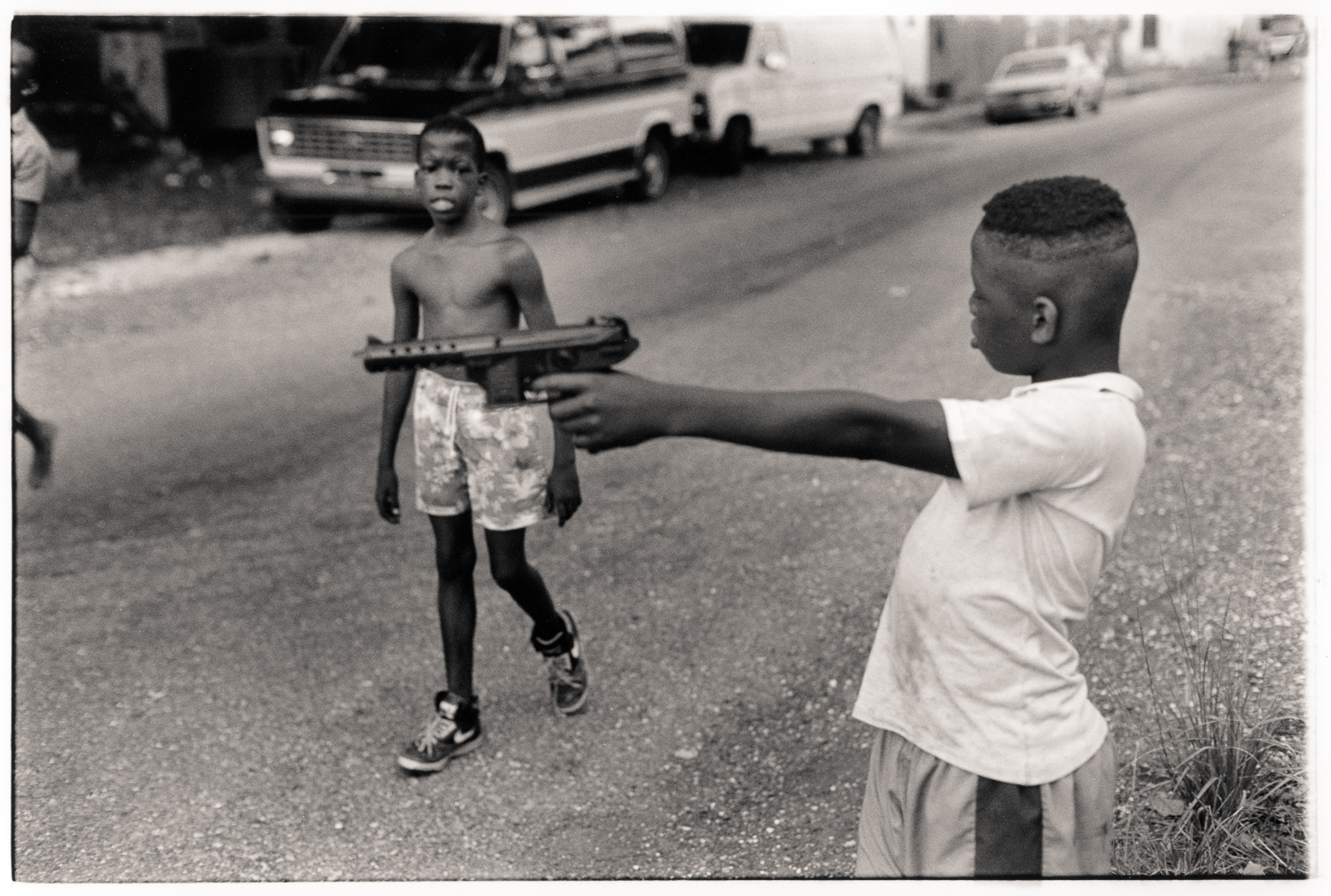
Irish Channel kids New Orleans, LA 1991

Mourner at Jazz Funeral for Danny Barker New Orleans, LA 1994

Jazz Funeral for Danny Barker New Orleans, LA 1994

Holt cemetery, NOLA

St. Roch Altar Wall #1
St. Roch Altar wall New Orleans, La 1994

Metarie Cemetery, Metarie, LA 1992

St. Roch Altar, New Orleans, La 1994

getting dressed for Zulu parade

putting on face paint for Zulu parade

NOPD silly string fight on Canal Street on Fat Tuesday. New Orleans, LA 1988

Lone Masker in French Quarter alley. NOLA

Three Maskers on Frenchman Street New Orleans, La 1995

Mardis Gras flasher, New Orleans, LA 1989

Soldiers for Christ at Mardis Gras,New Orleans, LA 1989

Mardis Gras drag queen New Orleans, LA 1989
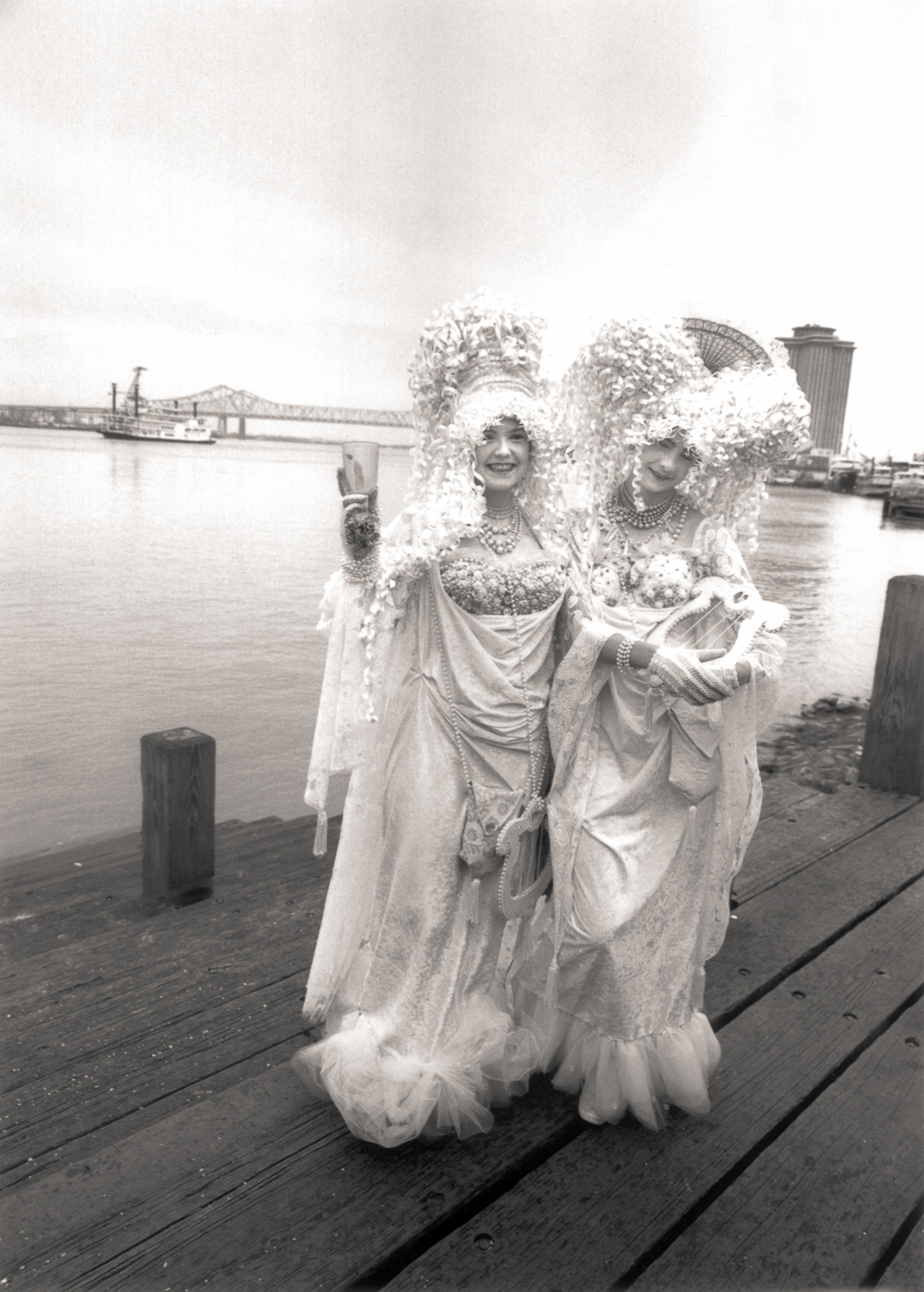
Mystic Krewe of St. Ann Maskers at Mississippi River New Orleans, LA 1994
Irish Channel, NOLA
LAND OF DREAMS:
A PHOTOGRAPHY EXHIBITION OF NEW ORLEANS CULTURE
I consider New Orleans to be the richest poor city in America.
So much of the culture that informs America was spawned there, and often comes from the depths of poverty and desperation. The Crescent City's strengths come from its pride, creativity, openness and its often gumbo-like sense of its own identity. While the city maintains many distinct and seperate cultures, the population, like many of the neighborhoods throughout the city, mix rich and poor, black and white and all the shades in between. Everyone regularly rubs elbows, both in life and in the myriad of cultural displays. The city and its surrounding parishes are rife with mystery, pageantry, squalor, decay, elegance and decadence. There is harmony and there is strife, there are celebrations of hope and a resignation of despair. It is a city that knows equally well how to fully live a life as well as how easy it is to take one. Despite, or perhaps because of, these factors I most agree with Jerry Lee Lewis' sentiment, "New Orleans, the land of dreams, The best place I have ever seen."
The photographs in this exhibition are a result of twenty years (so far) of wide-eyed wonder and fascination and love of this most amazing of American cities. For a city that is so hard to define, I have attempted to capture the cultural collage and the social symphony of the area in the tone and mood they inspire in me. I hope these images paint as broad a portrait of New Orleans as possible, in all it's permutations.
Bryce Lankard
New York City, 11/28/2005
Basin Street, New Orleans, LA 1987
'Land of Dreams'
The Herald-Sun, Blue Greenberg
Bryce Lankard's photographs are about a place that was. For 20 years, Lankard has looked at his beloved pre-Katrina New Orleans and celebrates it, warts and all.
In these days of camera phones where the unthinkable is shot and transmitted by amateurs, Lankard's photographs are not of the moment; they are, however, documents that situate a place in its time. Carefully organized, crafted and true to detail, in this exhibit Lankard has chosen moments in the lives of people who made up the warp and woof of New Orleans. Unasked, is the question, "Do we really want to resurrect the New Orleans of the past with its poverty, its squalor and its slums hidden behind the fantasies of the tourists?" Can we have New Orleans back as the dream world of fun and make-believe, or has the dream disappeared forever when the truth about the Ninth Ward made the headlines?
Lankard's photographs are in stark black and white; they invite long looks, nostalgic memories, anger, shock and a longing for the fairy tale of Mardi Gras. There is the beautiful young boy dressed in his finery before the parade of the Money Wasters Social Aid and Pleasure Club; the musicians and strutters marching with the Golden Trumpets Social Aid and Pleasure Club and Native Americans on Super Sunday. And there are the masked Flambeaux and a Zulu member getting his make-up applied. In another part of town are young white girls dressed for the Mystic Krewe of St. Anne and the pre-teen princesses sitting in a circle waiting for the Krewe of Caesar to begin while the older male leaders of Caesar pose for pictures backstage before the ball.
There are also other photographs: the naked female entertainers and the women who bare their breasts, the street entertainers, a kid playing a trombone as big as he is, a saxophone player in front of the Cabildo. And there is a homeless sleeper on Bourbon Street, two kids playing with a make-believe pistol and a toddler on a tricycle that has no front wheel.
Lankard has it all, the funeral parades, the above-ground cemetery and the church with its wall of offerings of limbs and crutches to a blessed saint. In his introduction to his catalogue, the artist describes New Orleans as "Graciousness and dissolution. Squalor and elegance. It is a city that knows how to live a life fully -- how easy it is to take one." That city is gone; that land of dreams is history.
Sho-bar, Bourbon Street, New Orleans, LA 1987
Beauty Contest, Golden Meadow, LA
Backstage at the Krewe of Caesar Ball
Backstage at the Krewe of Caesar Ball, New Orleans, La 1989
Carnival Princesses, Krewe of Caeser Ball
Carnival Princesses, Krewe of Caesar Ball, New Orleans, La 1989
Krewe members getting dressed, Caesar’s Ball New Orleans, LA 1989
Mystic Krewe of St. Ann on Fat Tuesday, NOLA
Cueing for Flambeaux, NOLA 1995
Masked Flambeaux carriers, New Orleans, LA 1995
Passing out Flambeaux, NOLA 1995
Three flambeaux, New Orleans, La 1995
Poydras St. NOLA
Cabildo Museum fire. NOLA
Cabildo fire New Orleans, LA 1988
The Economy New Orleans, LA 1988
Camp and St. Mary Streets, NOLA
Two kids on car in Central City New Orleans, LA 1987
Double dutch in the Irish Channel New Orleans, LA 1991
Mardi Gras revelers, NOLA 1988
Creole Wild West, indian practice at the Glass House, NOLA 1991
Mardi Gras Indian Wild Man on Super Sunday New Orleans, LA 1989
Mardi Gras Indians and Second Line New Orleans, LA 1989
Grits Pool Hall, Nola, 1993
Lady Linda and Tuba Fats in Jackson Square
Three French Quarter tappers New Orleans, LA 1991
Irish Channel kids New Orleans, LA 1991
Mourner at Jazz Funeral for Danny Barker New Orleans, LA 1994
Jazz Funeral for Danny Barker New Orleans, LA 1994
Holt cemetery, NOLA
St. Roch Altar Wall #1
St. Roch Altar wall New Orleans, La 1994
Metarie Cemetery, Metarie, LA 1992
St. Roch Altar, New Orleans, La 1994
getting dressed for Zulu parade
putting on face paint for Zulu parade
NOPD silly string fight on Canal Street on Fat Tuesday. New Orleans, LA 1988
Lone Masker in French Quarter alley. NOLA
Three Maskers on Frenchman Street New Orleans, La 1995
Mardis Gras flasher, New Orleans, LA 1989
Soldiers for Christ at Mardis Gras,New Orleans, LA 1989
Mardis Gras drag queen New Orleans, LA 1989
Mystic Krewe of St. Ann Maskers at Mississippi River New Orleans, LA 1994









































